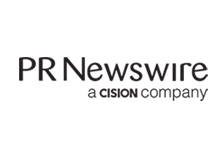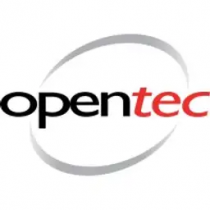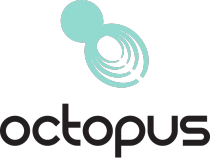Prime Therapeutics Proves PBMs' Value: Delivers Negative Drug Trend in 2017
EAGAN, Minn., Feb. 20, 2018 /PRNewswire/ -- Prime Therapeutics LLC (Prime), a leading pharmacy benefit manager (PBM) with more than 27 million members nationally, issued its annual 2017 drug trend results today, reporting its clients saw overall expenditure reductions (per member per month) across all lines of business - commercial, Medicaid, and Medicare - compared to 2016. This represents the second consecutive year of outstanding trend results. Prime's numerous management tools were fundamental in helping to lower commercial drug trend to -0.2 percent, Medicare Part D to -0.8 percent and Medicaid to -5.4 percent. Additionally, corresponding annual savings delivered to clients in 2017 exceeded $3 billion across all three lines of business.
"Our outstanding 2017 drug trend results are hard won, especially as we continue to see ongoing and significant price increases for medicines in some of the most expensive disease categories," said Jim DuCharme, Prime's president and CEO. "These outcomes require many dedicated employees working tirelessly on behalf of our clients and their members to deliver optimal care and prescription drugs at the lowest net cost. Our close alignment with 22 Blue plan clients - 18 of whom are owners - allows us to see the complete pharmacy and medical drug picture to help us drive total cost of care outcomes."
Despite these positive results, specialty medicines continued to exert upward pressure on trend across several lines of business. Specialty trend was 13.0 percent for commercial clients and 3.9 percent for Medicare Part D clients. Medicaid clients experienced a negative specialty trend at -1.8 percent in part due to lower utilization of hepatitis C medicines. Drugs used to treat autoimmune conditions, such as rheumatoid arthritis and multiple sclerosis, were a key driver of specialty trend across all three lines of business. Expenditures for those conditions increased between 16 and 25 percent.
Prime offset these upward spending pressures by delivering substantial savings in several areas:
-- Negotiated discounts - In 2017, Prime secured substantial discounts
including competitive rebates and more than $1 billion from pharmacy MAC
pricing, illustrating the important role generics play in controlling
drug costs. Client adoption of Walgreens-anchored networks also exerted
downward pressure on trend. Incremental negotiated savings exceeded $1.9
billion.
-- NetResults(TM) formulary - Drug trend for commercial clients that
adopted Prime's NetResults formulary was 8 percentage points lower on
average compared to clients not using this formulary. Total savings for
lives covered by NetResults ranged from $10 to $14 net per member per
month (PMPM).
-- Utilization management - Prime's efforts to promote appropriate use of
medicines approached $2.3 billion in total savings across all three
lines of business.
-- Pain medication management - Prime is particularly proud of our efforts
in managing controlled substances such as opioids. Not only has Prime
decreased pain medicine expenditures across all three lines of business
(-14.6 percent in commercial, -12.2 percent in Medicare and -9.8 percent
in Medicaid), but these results build on Prime's controlled substance
successes over the past five years. These successes include decreasing
by 71 percent the number of commercial members who were at high-risk for
misuse* and reducing their health care costs by $1,500 PMPY.
-- GuidedHealth(® )- GuidedHealth analyses identified gaps in care and
adherence that generated more than $375 million in medical cost
avoidance and adherence savings across all three lines of business. This
illustrates Prime's ability to deliver value that impacts both medical
and pharmacy spending.
"While we're thrilled drug expenditures for our clients declined in 2017, this doesn't mean drug costs no longer present a challenge," said David Lassen, chief clinical officer at Prime. "Low trend is not synonymous with low cost. Prescription drugs still represent 20 to 30 percent of costs for our health plans and employers. And out of the 46 drugs the FDA approved in 2017, eight of them drove commercial trend by about 1 percent, at an average price tag of $96,000 annually."
Three categories - autoimmune, cancer (oral), and HIV drugs - all saw double-digit trend increases and drove about one-quarter of Prime's commercial drug spending. Client adoption of Prime's PBM tools drove much needed cost relief. Declining utilization of ultra-expensive therapies for hepatitis C also helped lower overall spending after use of these treatments surged in recent years.
"PBMs play a crucial role in counterbalancing upward forces in drug spending," DuCharme concluded. "Without our active and assertive efforts to help drive clinically appropriate use and lowest net cost, spending on prescription drugs would be much higher. We're proud to stand alongside our clients in this important work, helping people get the medicine they need to feel better and live well."
Additional detail on key trend drivers and the savings Prime delivered to its clients last year can be found in Prime's 2017 commercial, Medicare, and Medicaid reports, now available in the newsroom on primetherapeutics.com.
* Members without cancer and a
6-month average morphine
equivalent dose of 90mg or more
who receive opioid
prescriptions at more than
three pharmacies AND from more
than three prescribers OR more
than five prescribers
regardless of pharmacy total.
About Prime Therapeutics
Prime Therapeutics LLC (Prime) helps people get the medicine they need to feel better and live well. Prime manages pharmacy benefits for health plans, employers, and government programs including Medicare and Medicaid. The company processes claims and offers clinical services for people with complex medical conditions. Prime serves more than 27 million people. It is collectively owned by 18 Blue Cross and Blue Shield Plans, subsidiaries or affiliates of those plans. For more information, visit www.primetherapeutics.com or follow @Prime_PBM on Twitter.
Contact: Karen Lyons, APR
Director, Corporate Communications
612.777.5742
klyons@primetherapeutics.com
View original content:http://www.prnewswire.com/news-releases/prime-therapeutics-proves-pbms-value-delivers-negative-drug-trend-in-2017-300600231.html
SOURCE Prime Therapeutics




